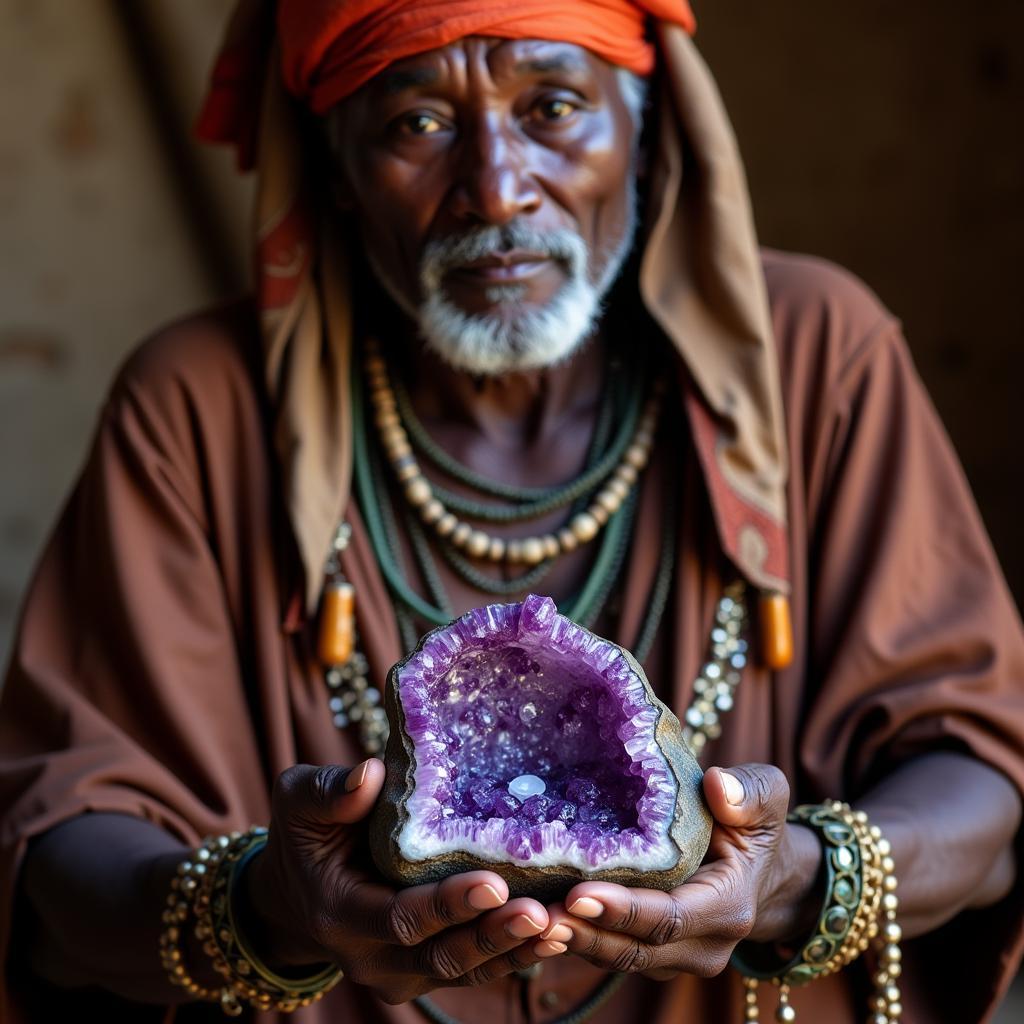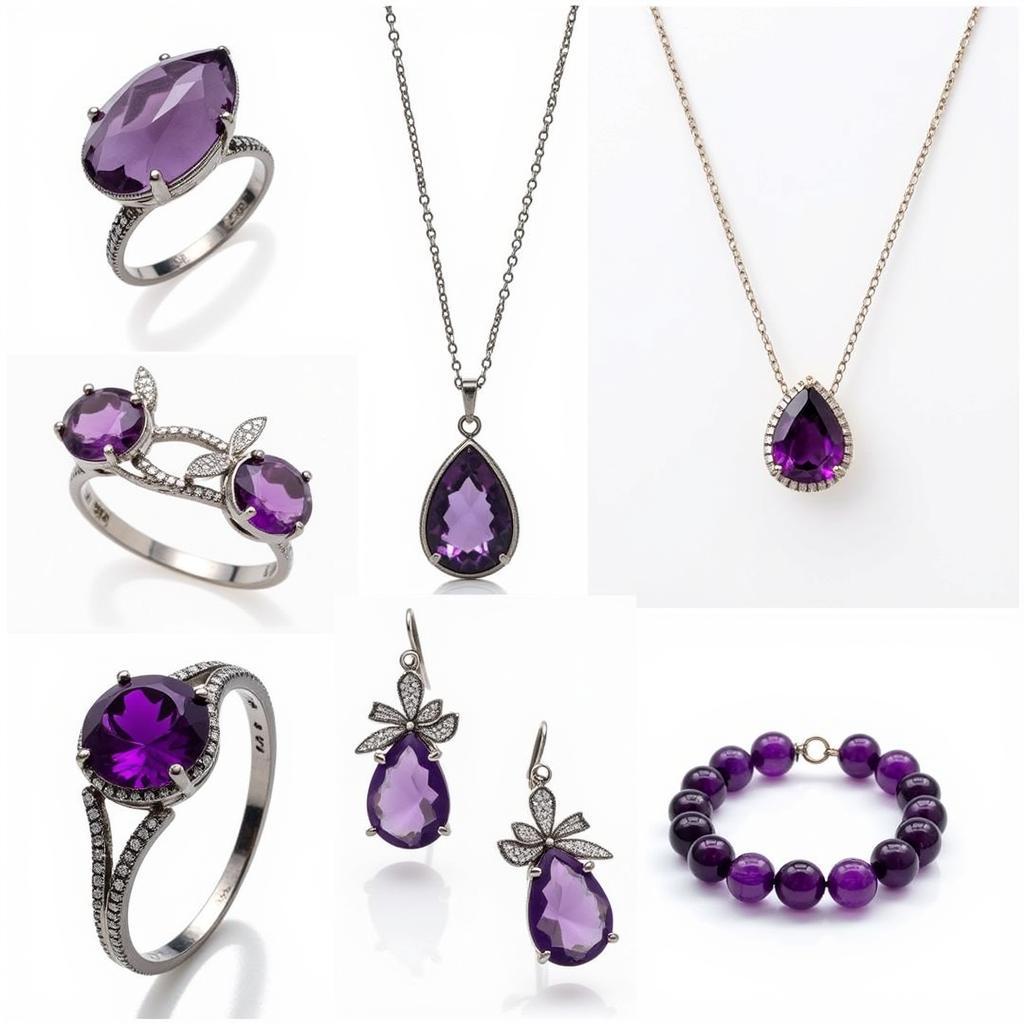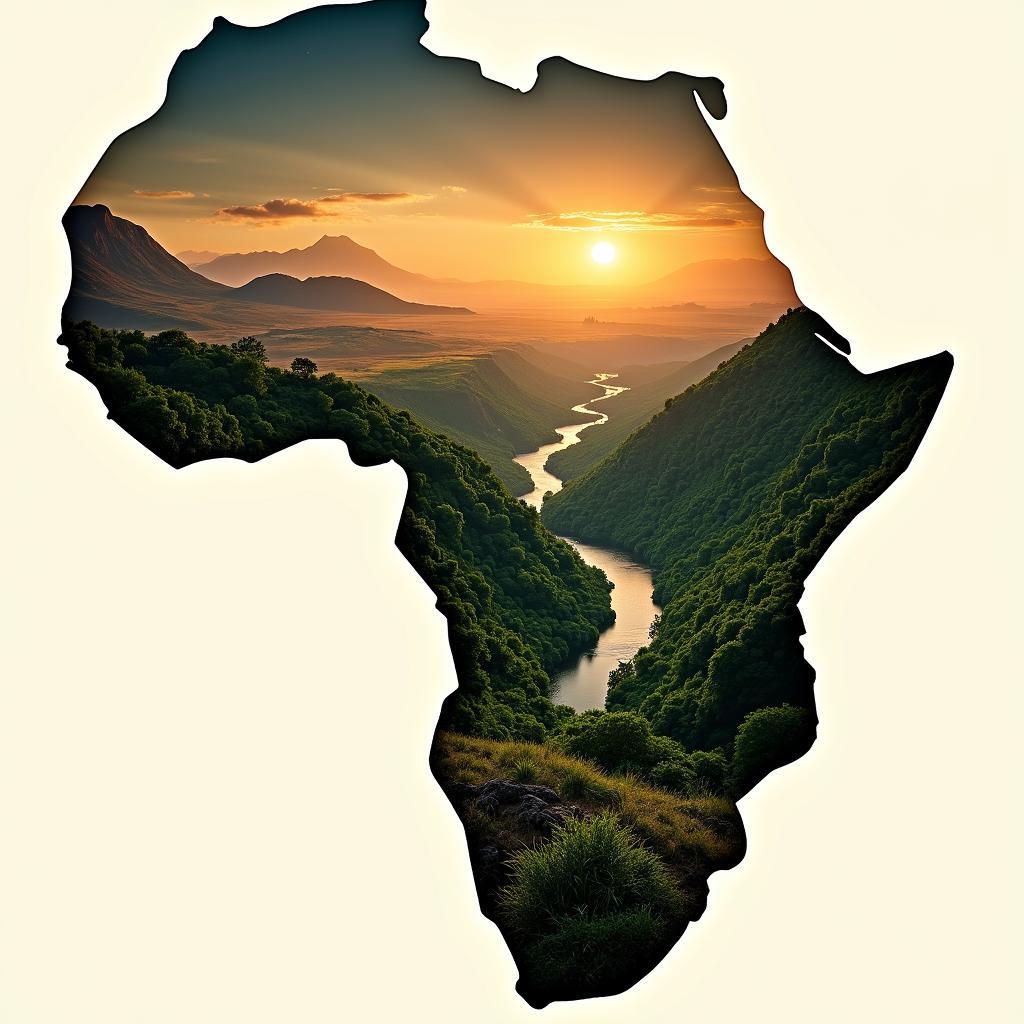Unveiling the Allure of African Amethyst
African Amethyst, with its captivating violet hues, has long held a place of fascination. From its geological origins to its cultural significance and modern uses in jewelry and beyond, this gemstone offers a unique story waiting to be discovered. We’ll explore the world of African amethyst, from its formation deep within the earth to its presence in the hands of artisans and collectors. You’ll discover what sets this stone apart, its value, and its enduring appeal.
The Geological Story of African Amethyst
Amethyst, a variety of quartz, obtains its signature purple color from iron impurities and natural irradiation. African amethyst, like its counterparts from other regions, forms within volcanic rock cavities called geodes. These geodes, often lined with shimmering crystals, can range from small, fist-sized formations to massive structures several meters across. The specific geological conditions of each region influence the final color and quality of the amethyst produced. African amethyst deposits are particularly known for their intense color saturation, which can vary from a delicate lavender to a deep, regal purple.
After the initial paragraph about African amethyst, let’s delve into one of its specific forms: the african amethyst heart. These heart-shaped gemstones carry a special symbolic meaning, making them highly sought after.
The Cultural Significance of African Amethyst
Across cultures, amethyst has been associated with royalty, spirituality, and healing. In ancient Egypt, it was used in jewelry and amulets, believed to protect the wearer from harm and enhance wisdom. Some African cultures view amethyst as a symbol of peace, tranquility, and connection to the spiritual realm. It’s often used in traditional ceremonies and rituals. The reverence for this stone transcends generations, linking ancient beliefs with modern appreciation.
 African Amethyst in Traditional Ceremony
African Amethyst in Traditional Ceremony
African Amethyst: From Mine to Market
The journey of African amethyst from its discovery within the earth to its transformation into exquisite jewelry is a fascinating process. Miners carefully extract the amethyst-filled geodes, which are then transported to lapidaries. These skilled artisans cut and polish the raw stones, revealing their inherent beauty and brilliance. African amethyst is often fashioned into cabochons, faceted gems, and beads. It’s also popular as a decorative element in its natural, raw form. For a closer look at cabochons, explore african amethyst cabochon to understand their unique charm and appeal.
What Makes African Amethyst Unique?
African amethyst often displays a deeper, more vibrant purple color compared to amethyst from other regions. This intensity, combined with its clarity and brilliance, makes it highly desirable for jewelry and collectors. The geological conditions specific to African amethyst deposits contribute to its unique characteristics. The african amethyst gemstone stands out for its unique properties and allure.
Caring for Your African Amethyst
Amethyst is relatively durable, but it’s important to care for your African amethyst jewelry properly to maintain its beauty. Avoid exposing it to harsh chemicals, extreme temperatures, and prolonged sunlight, which can fade its color. Clean your amethyst jewelry with warm, soapy water and a soft cloth.
 Collection of African Amethyst Jewelry
Collection of African Amethyst Jewelry
Is African Amethyst Expensive?
The price of african amethyst stone varies depending on several factors, including its color, clarity, cut, and size. Deeply colored stones with exceptional clarity command higher prices. The african amethyst i color is a particularly prized variety known for its intense saturation.
Conclusion: The Enduring Appeal of African Amethyst
From its geological origins to its cultural significance, African amethyst holds a unique allure. Its rich violet hues, combined with its durability and versatility, make it a prized gemstone for both jewelry and collectors. Whether you’re drawn to its beauty, its history, or its symbolic meaning, African amethyst offers a timeless connection to the wonders of the natural world.
FAQ
- Where is African amethyst found? Primarily in countries like Zambia, Tanzania, and Namibia.
- What is the meaning of amethyst? It’s often associated with peace, tranquility, and spiritual awareness.
- How can I tell if my amethyst is real? Look for natural inclusions and variations in color.
- What is the best way to clean amethyst? Use warm soapy water and a soft cloth.
- Is African amethyst more expensive than other types? Its price depends on factors like color and clarity.
- Can amethyst be exposed to sunlight? Prolonged sunlight can cause its color to fade.
- What is the hardness of amethyst? It ranks a 7 on the Mohs scale.
Other Questions We Often Get
- What are the different cuts of African amethyst?
- Can amethyst be used for healing purposes?
- Where can I buy authentic African amethyst jewelry?
You can find answers to these questions and explore more about African amethyst in our other articles: “African Amethyst: A Buyer’s Guide” and “The Healing Properties of Amethyst.”
Need assistance? Contact us 24/7: Phone: +255768904061, Email: kaka.mag@gmail.com or visit us at Mbarali DC Mawindi, Kangaga, Tanzania.



